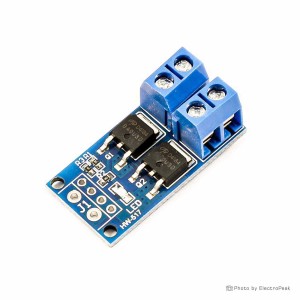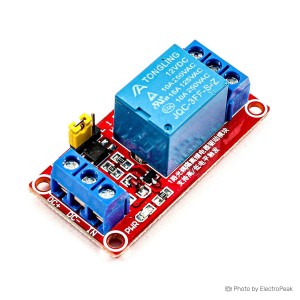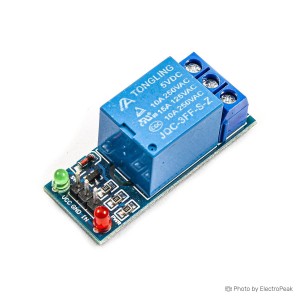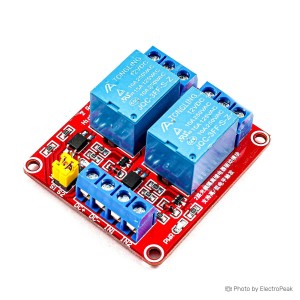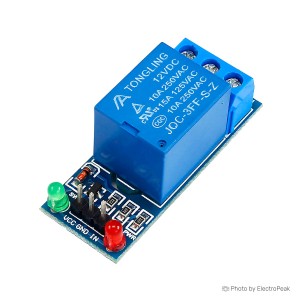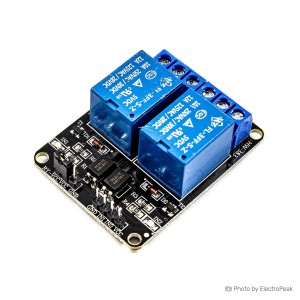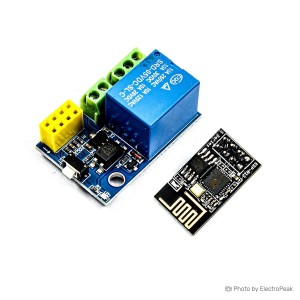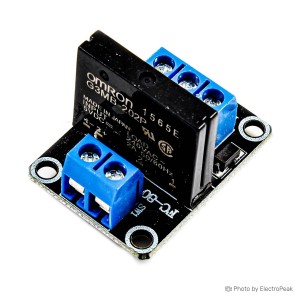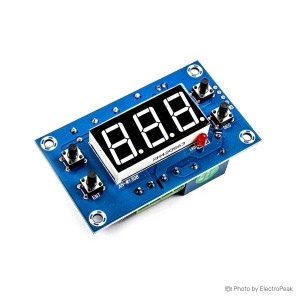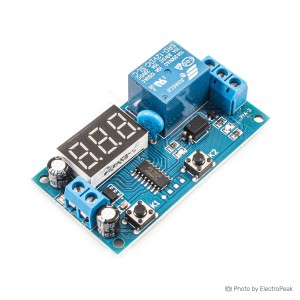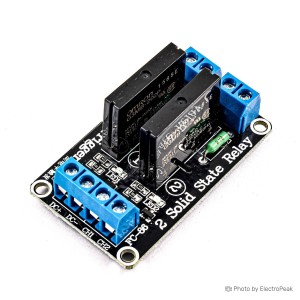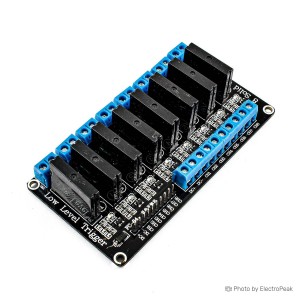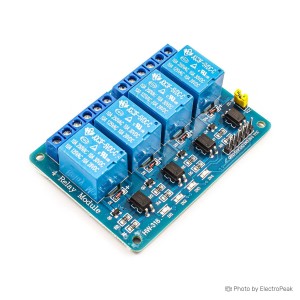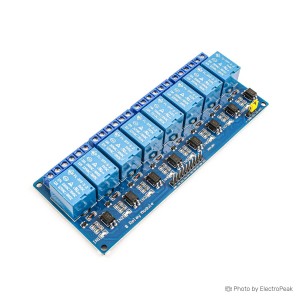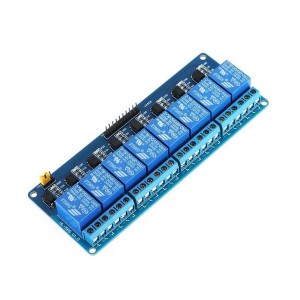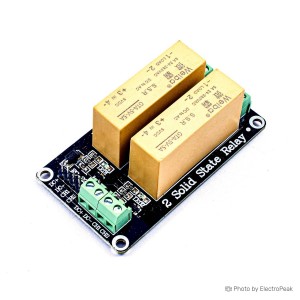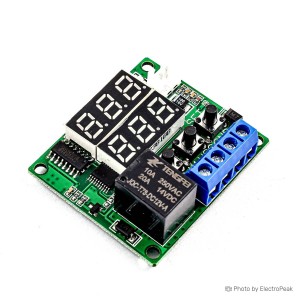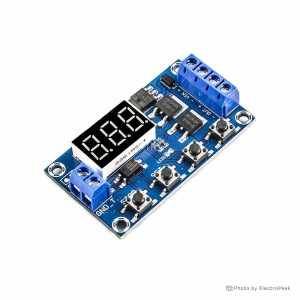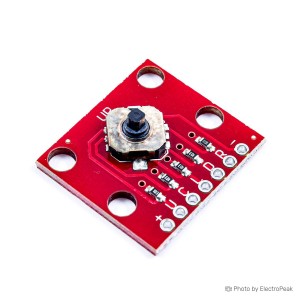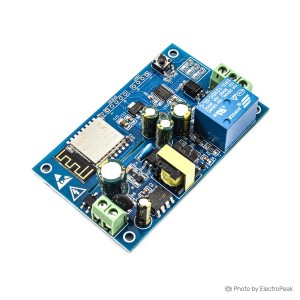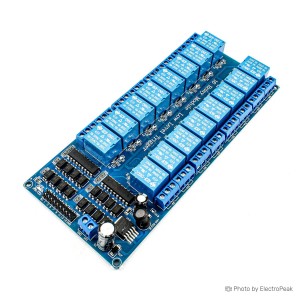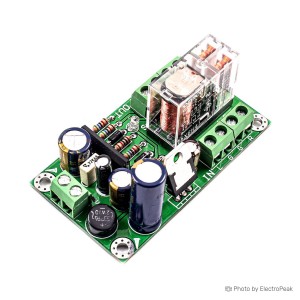While possible, it's advisable to use a driver circuit or transistor for each relay to prevent overloading the microcontroller pin. Distributing the load across multiple pins or using a relay driver IC enhances stability and avoids excessive current draw.
Relay & Switches
Relay Modules
A relay is an electromechanical switch that operates by using an electromagnet to control the switching of one or multiple circuits. It allows low-power signals to control high-power devices, making it a crucial component in various electronic applications.
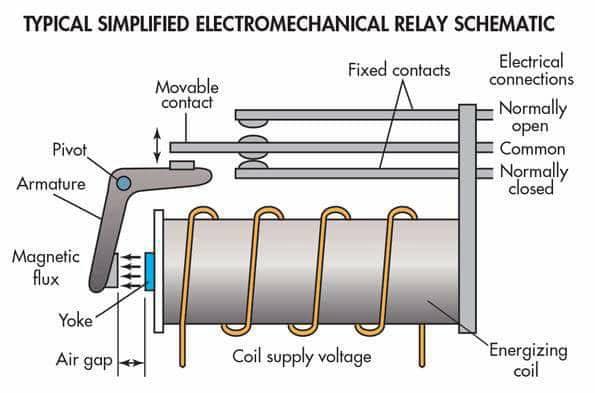
Tips for Buying Relay
Before purchasing a relay, consider the following tips to ensure the right choice for your application:
- Understanding Your Application: Clearly define the requirements of your project, including voltage, current, and switching capacity. This will help you choose a relay that aligns with your needs.
- Selecting the Right Type: Relays come in various types, including electromechanical and solid-state relays. Consider the nature of your application to determine the most suitable type.
- Checking Compatibility: Ensure that the relay is compatible with the voltage and current levels of your system. Choosing a relay with a higher switching capacity than required provides a safety margin.
- Quality and Brand: Opt for relays from reputable brands known for their reliability. Quality is crucial, especially in applications where performance and longevity are essential.
- Considering Lifecycle: Some applications require relays with a high switching lifecycle. Assess the relay's durability and choose one that can withstand the demands of your project.
Types of Relays
Explore various relay types to find the one that best fits your project:
- Electromechanical Relays: Traditional relays that use an electromagnet to mechanically operate the switch. They are reliable and widely used.
- Solid-State Relays (SSR): Utilize semiconductor devices for switching. SSRs are faster, quieter, and ideal for applications where noise and speed are critical.
- Latching Relays: Maintain their state without continuous power. They are energy-efficient and suitable for power-saving applications.
- Time Delay Relays: Introduce a delay before the switch is activated, making them suitable for applications requiring time-based control.
- Protective Relays: Designed to protect equipment by responding to abnormal conditions, such as overcurrent or overvoltage.
- Polarized Relays: Have a specific direction for the flow of current. They are crucial in applications where the polarity of the signal matters.
- Bi-Stable Relays: Require a pulse of power to change state and another pulse to return. They are energy-efficient and maintain their state without continuous power.
- High-Frequency Relays: Engineered for applications involving high-frequency signals, such as RF or microwave systems.
- Automotive Relays: Designed for use in vehicles, these relays withstand the challenging conditions of automotive environments.
What Types of Relays are available based on specifications
Based on Current:
- 5A Relay: Suitable for low-current applications.
- 10A Relay: Handles moderate current loads.
- 30A Relay: Ideal for high-current requirements.
Base on Voltage:
- 5V Relay: Low-voltage activation for compatible circuits.
- 12V Relay: Commonly used in automotive applications.
- 24V Relay: Suitable for industrial control systems.
Coil Type:
- Latching Relay: Maintains its state even after power loss.
- Non-Latching Relay: Requires a continuous power supply for operation.
Switching Configuration:
- Single Pole Single Throw (SPST): Simple on/off control.
- Single Pole Double Throw (SPDT): Switches between two circuits.
- Double Pole Single Throw (DPST): Controls two independent circuits.
- Double Pole Double Throw (DPDT): Manages two circuits, each with two possible states.
Can I drive relays from a single microcontroller pin?
How to protect the microcontroller when driving an inductive load like a relay?
Inductive loads, such as relays, can produce voltage spikes during deactivation. Protect the microcontroller by adding a flywheel diode (freewheeling diode) across the relay coil. This diode dissipates the energy, preventing damage to the microcontroller.
Which relay is used for Arduino? / Are there specific relay models designed for use with Arduino (microcontroller)?
Absolutely! There are dedicated relay models crafted explicitly for seamless integration with Arduino or other microcontrollers. These relays often come equipped with a built-in driver circuit, simplifying the interfacing process. They are available in a range of voltage options, including 5, 12, and 24 volts, catering to diverse project needs. Furthermore, you can find them configured with different relay quantities on a single board, offering flexibility with options like single, dual, quad, 8th, and 16th relays. Additionally, these relays boast three types of triggers—LOW, HIGH, and Configurable—allowing you to align them precisely with your microcontroller's specifications. This tailored compatibility ensures a hassle-free and efficient integration process for your Arduino projects.
Can I control a 5V or 12V relay module with an ESP/STM?
Absolutely! You can utilize a 5-volt (or 12-volt) relay model with a 3.3-volt microcontroller like ESP32 or STM. To enhance compatibility, opt for a LOW Trigger model or adjust the resistor on the optocoupler (Opto-isolator) input pin. This ensures efficient communication with the microcontroller, thereby improving overall performance. Additionally, when employing a 5-volt relay (or 12-volt for corresponding models), ensure you use an external power source to provide power to the relay. Connect the ground (GND) of the power source with both the relay model's GND and the GND of the ESP/STM microcontroller. Establishing this common ground helps prevent signal issues and ground loop problems, ensuring a reliable setup.
Why is a flywheel diode necessary in a relay circuit? / What is the purpose of a snubber circuit in relay systems?
The flywheel diode, often referred to as a freewheeling or snubber diode, serves a protective role in relay circuits. When a relay coil is de-energized, it generates a back electromotive force (EMF) that can lead to voltage spikes. The flywheel diode is strategically connected in parallel to the relay coil, providing a path for this induced current to circulate harmlessly. By preventing voltage spikes, it safeguards sensitive components and ensures reliable and smooth operation of the relay, contributing to the overall stability of electronic systems.
What precautions should I take when working with relay circuits?
When working with relay circuits, observe proper insulation and grounding. Avoid exceeding the relay's voltage and current ratings. Additionally, implement protective measures such as flyback diodes and snubber circuits to safeguard the circuit from voltage spikes.
Can I use a relay to control high-voltage devices with a low-voltage microcontroller?
Yes, relays are commonly used for this purpose. The low-voltage microcontroller activates the relay, and the relay's contacts handle the high-voltage load. This ensures safe control of high-power devices using a low-voltage control signal.
What is the significance of the coil resistance in a relay?
The coil resistance affects the current flowing through the relay coil. Choosing the right coil resistance is crucial for ensuring proper activation by the control signal. It also influences the energy consumption and overall efficiency of the relay circuit.
What are the common issues in relay circuits and how to troubleshoot them?
Common relay issues include contact welding, coil burnout, and contact bounce. Troubleshooting involves checking connections, verifying the control signal, and ensuring the proper voltage and current for the relay. Replacing faulty components and adding protection circuits can address these issues.
What is the lifespan of a typical relay?
The lifespan of a relay depends on factors like usage, load conditions, and environmental factors. Generally, electromechanical relays can last for hundreds of thousands to millions of cycles, while solid-state relays (SSRs) often have longer lifespans due to their absence of moving parts. Regular maintenance and proper usage contribute to extended relay life.
